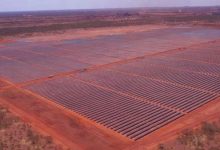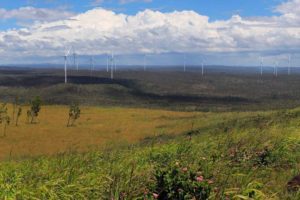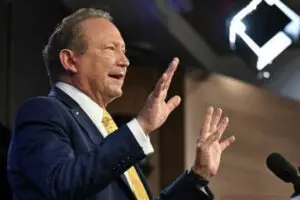Andrew Forrest’s Fortescue iron ore and now green industry empire plans to be the biggest customer of the proposed gigawatt scale solar PV manufacturing plant that it intends to build in Queensland.
The 1GW solar PV factory was announced as part of Fortescue Future Industry’s purchase of a majority stake in Dutch-based hydrogen and solar technology company HyET, and would signal a dramatic scaling up of the country’s green energy ambitions.
Fortescue Metals CEO Elizabeth Gaines confirmed on Thursday that the factory would be built at the Green Manufacturing Centre it is planning for Gladstone in Queensland, where it also intends to build a 2GW electrolyser factory using technology from the US-based hydrogen specialists Plug Power.
Gaines said the timing of the solar factory, which has raised some eyebrows in Australia because of its choice of thin-film and flexible solar technology, is not yet clear. “It’s early stages,” Gaines said in response to a question from RenewEconomy in the company’s quarterly report call.
But Fortescue said it would be the biggest customer of the solar factory, as part of its efforts to rollout gigawatts of green energy production to underpin its ambitious renewable hydrogen plans.
Forrest has stated that he wants Fortescue Future Industries to be producing 15 million tonnes of green hydrogen by 2030, and scale it up significantly after that. That would require tens of gigawatts of renewable energy capacity to deliver that scale of production.
Gaines said the massive plans – along with a “carbon neutral” target for Fortescue by 2030 – were part of the company’s transition from a pure play iron ore producer to a green renewables and resources company.”
“Fortescue Future Industries (with now has more than 550 staff) will be a key enabler of our scope three targets through the development of technologies and the supply of green hydrogen and ammonia.”
Fortescue hopes to begin production of hydrogen electrolysers by 2023, and in response to questions said it was confident of gaining the planning approvals in the needed timeframe to meet that deadline.
The joint venture with Plug Power, which will supply an initial 250MW of electrolysers for use in Australia – will also likely expand into fuel systems and other hydrogen related refuelling and storage infrastructure.
“We need solar panels, wind towns, and electrolysers in such scale that we need to produce them in Australia,” Forrest said during a recent webinar with Plug Power.
Fortescue is currently commissioning the 60MW Chichester solar farm which will help power the iron ore mines in the Pilbara, and is looking to add another 150MW of solar and storage as part of an expansion of that network to power new mines.
Forrest, who is now in the UK with FFI CEO Julie Shuttleworth, and will attend the Glasgow COP26 climate summit, has been one of the most outspoken advocates of renewable hydrogen over fossil fuel based hydrogen, which he – along with most analysts – says would be an environmental disaster.
“We need to take on the fossil fuel sector, which even bigger and uglier and hairier” than the iron ore industry,” Forrest told the Plug Power webinar.










